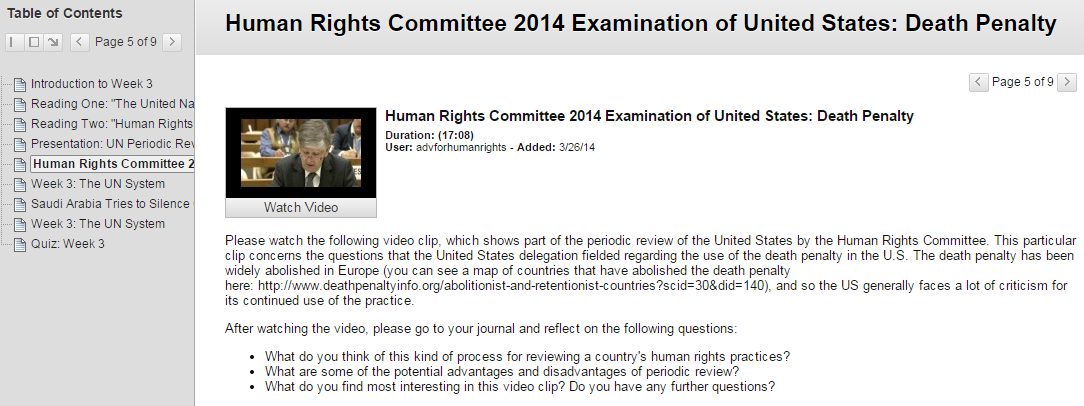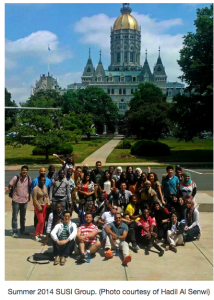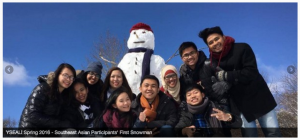This is the second blog in a post-election mini-series on Teaching Human Rights. In the first blog, Teaching Human Rights Editor and Contributor, Nicole Coleman, shared her experience in the classroom the day after the general election. She highlighted the importance of creating understanding of why traditionally marginalized students might need support navigating the era of President-elect Trump. She also addressed the fact that it is the responsibility of white people to stand up to bigotry and in solidarity with those who have been targets of the President-elect’s campaign. In this post, I will present an example of how a guest lecturer guided students through a historical account of the electoral politics, race, and class.
A guest lecturer was scheduled to speak two days after the general election on the satellite campus of a public state university. The satellite campus is located in a major urban city in the United States where a majority of the students identify with communities traditionally marginalized and who were targeted during the campaign season, i.e. women, African Americans, working class, inner city residents, of Muslim faith, and/or immigrants. Only after the election did the organizers of the event realize how timely the lecture would be.
The presentation was entitled, “Trumped: Electoral politics and the clash of race and class.” The speaker, Ewuare Osayande (http://www.osayande.org), is a community organizer, accomplished author, student of history, and self-proclaimed rebel.
Mr. Osayande began his presentation with a series of questions, including why Trump, why now? Why would the white working class get behind a man who has spent his career getting rich on the backs of the white working class? Why would the white poor vote against their own best interests? Why is there not an alliance within the working class, regardless of race? He responded that we must appreciate where we are at this point in American history. And this election exposes why logical answers are not always found in individual votes.
Mr. Osayande highlighted that a real democracy would recognize the popular vote; the lie for him is within the Electoral College. The Electoral College was established through the Three-Fifths Compromise proposed during the drafting of the U.S. Constitution. At that time, it was agreed that a system needed to be put into place to ensure that the Northern states with more population did not sway the vote away from the less populated Southern states. Slaves within a state were counted as three-fifths of a white person’s vote (http://constitution.laws.com/three-fifths-compromise). To this day, the Electoral College continues to discount votes from black and brown voters which I realized particularly when my 18-year-old niece’s boyfriend told me that his vote did not count because he was brown. The Three-Fifths Compromise is just one of many laws that empowered the white colonists and contributed to what we now call white privilege.
Mr. Osayande pulled more history in to the discussion and highlighted that in Black Reconstruction, W.E.B. DuBois (1935) emphasized that the white working man was often as impoverished as the black man who was enslaved. Specifically, in the chapter entitled, “The White Worker,” DuBois forecasted how even today capitalists pit white workers against “others.” During the 2016 election campaign, the rhetoric was that “immigrants are taking away jobs” as a way to redirect anger felt by the un- and underemployed workers towards immigrants; instead the narrative needed to be shifted to the necessity of a living wage in the United States. From DuBois to Bernie Sanders workers must recognize the power is in their numbers and need to unite despite their differences.
Mr. Osayande related this psychological game of whiteness between capitalists and workers to the seeds of fascism nurtured during the 2016 U.S. Presidential Election. Theories of race contribute to the white working class not understanding that the commonalities they have with black and brown communities are more relevant than the similarities they have with the rich and elite. The poor whites, at least those who bothered to vote, voted for Trump because we still hold tight to the American Dream. Yet, poor white Americans’ lives are more similar to the black and brown urban poor Americans’ lives than they are willing to admit. Does this really mean that poor white voters decided Trump offered them the best opportunity?
As Mr. Osayande stated, President-elect Trump’s political base represented the bald face of capitalism and is propelled by the “alt-right,” a movement made up of neo-Nazi, paramilitary, and Tea party voters. The 2016 election exposed to the liberal leaning voters that the mask is off and the new movement does not need politicians to represent them, they can represent themselves through self-funded campaigns bolstered by Citizen’s United v. FEC which gives businesses unlimited ability to finance campaigns and political advertisements.
Mr. Osayande pointed out that the 2016 election also exposed that women in the United States are still not united. Black women overwhelmingly voted for Hillary Clinton. This vote wasn’t because Black women were overly excited for another Clinton presidency, but because Black women understood the larger context of how politics will impact individual lives. White women, on the other hand, voted against their own best interests and based their vote on white privilege.
Mr. Osayande also highlighted that there is hope though in our future. Young Americans (18-25 years old) overwhelmingly voted for Clinton. This voter bloc also polled highly in favor of policies that secure economic rights Since the Civil Rights Movement, America has slowly moved towards a democratic nation. Within two generations the first Black President was elected. There is hope in the realization of Dr. Martin Luther King Jr.’s call for a revolution of values that will ensure all people in the United States have opportunity.
Perhaps it was serendipitous that Mr. Osayande’s lecture was scheduled post-election, but as instructors interested in teaching human rights, we must engage with community experts to expose students to a variety of voices and viewpoints. Teaching human rights goes beyond international laws and history, as such we must be prepared to utilize pivotal current events as teachable moments.
Christina Chiarelli-Helminiak



